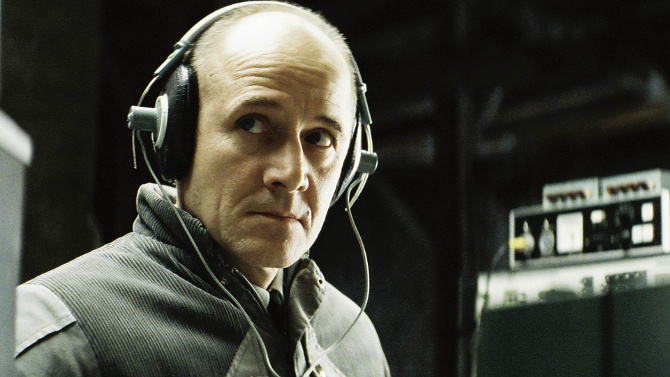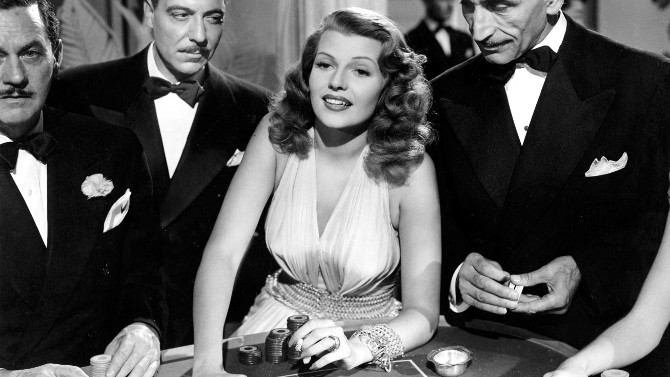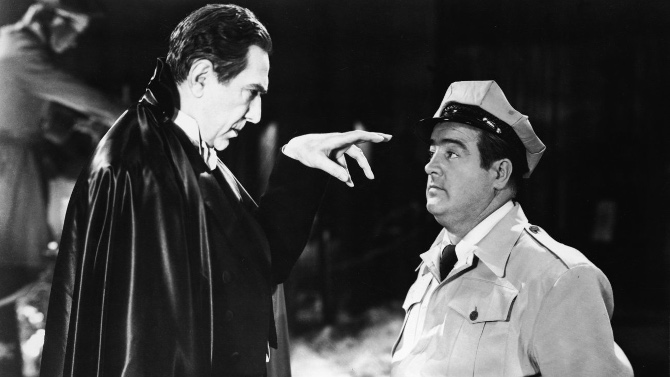
Murder ‘Mystery’
Sometimes a movie just doesn’t fit perfectly within its own genre... going against a few of the tropes that define what something is, all while hitting enough of them to still be what it is – confusing! That’s the case with this latter-day Italian giallo, Mystère... sometimes better known by its English title Dagger Eyes (1983). Co-written and directed by Carlo Vanzina, the film opens with a rather impressive, though more crime inspired assassination in Rome... resembling the real life John F. Kennedy car killing. It will start a chain reaction of murders that will rock the Eternal City.
-

Are You Listening?
The Lives of OthersApril 17, 2016As viewers, we act as voyeurs, observing the intricacies of the character’s lives – their actions, interactions, relationships, affairs and countless other physical or mental manoeuvres. Films can act as therapy and relief, or can cause self-reflection, disgust or numerous other emotions depending on how we react to what we are scrutinizing on the screen. It may resemble something we have done in our own lives or could illustrate a seedy side of life that we have never even contemplated. A number of directors have cleverly infused their stories around the concept of voyeurism, adding a deeper level to our viewership, to great effect. The first filmmaker to come to mind is Alfred Hitchcock, who masterfully concocted Rear Window and Psycho around these themes, though there are countless other examples: Michael Powell’s Peeping Tom, Peter Weir’s The Truman Show and Stanley Kubrick’s Eyes Wide Shut are merely three more that fall within this category. A European motion picture that once again delves into this intriguing topic is Florian Henckel von Donnersmarck’s 2006 movie The Lives of Others.
-
Two Timeless Classics from Buster Keaton
 One WeekThe 'High Sign'April 15, 2016
One WeekThe 'High Sign'April 15, 2016The triumvirate of silent era comedians, in no particular order, are as follows: the ever famous Charlie Chaplin, the oft forgotten Harold Lloyd and ‘The Great Stone Face’ Buster Keaton. As I have already reviewed a film of Lloyd’s and several of Chaplin’s, I thought it would be a good time to visit some of the work of Keaton’s acrobatic and stoic-faced silent era screen personas. To change things up a tad, I also thought it would be fun to look to some of his earlier short films instead of his more iconic full length features like The General.
-

Larry David Playing Larry David Playing Woody Allen
Whatever WorksApril 12, 2016Chance, luck and fate are themes that are often examined in a plethora of genres. One director who analyses these topics in interesting ways is the always entertaining Woody Allen. Many of his recent motion pictures, including Match Point, have scrutinized these random and inscrutable aspects of life: with the phrase "I’d rather be lucky than good" being one of the observations found in the above stated film. Another of his movies, this one more comedic, that tackles these topics is the lesser known 2009 flick Whatever Works.
-

Luck be a Lady Tonight
GildaApril 10, 2016There is nothing like a memorable entrance/introduction to an onscreen character. The film that I am reviewing today has three. As the camera pans up at the very beginning of the movie, we are nearly hit by voice over narrator Johnny Farrell’s (Glenn Ford) trick dice. As he leaves the sketchy gambling room (after easily winning some cash with his fake cubes), he is held at gunpoint by a robber. In comes his saviour and soon to be boss, Ballin Mundson (George Macready), who uses his ‘best friend’, a walking stick that hides a dangerously long and sharp bayonet to save the nervous man. But it is the third and final entrance that blows the other two away. After Farrell begins to work for Mundson for some time, he learns, upon his bosses return from a trip, that he has gotten married. As the two enter the dame’s bedroom, her husband asks, "Gilda, are you decent?". Rita Hayworth’s title character, after a slight pause, pops up on the screen, and with a sensual flip of her perfect locks, flirtatiously responds "Me?". Dare I say, drama ensues.
-
Scare Up Some Laughs
 Hold That GhostAbbott and Costello Meet FrankensteinApril 8, 2016
Hold That GhostAbbott and Costello Meet FrankensteinApril 8, 2016There are many classic comedians that are still honoured and remembered fondly today. People like the Marx Brothers, the Three Stooges, Charlie Chaplin and Buster Keaton are highly regarded funny men, yet the comedy team of Bud Abbott and Lou Costello are, in my opinion, less quickly thought of than those mentioned above. Despite this, many of their films, which include a mixture of memorable physical comedy and witty dialogue, still hit the funny bone today. Two of my favourites mix comedy with the horror genre: 1941's Hold That Ghost and 1948's Bud Abbott and Lou Costello Meet Frankenstein.
-

A Fateful Reunion
The Night PorterApril 5, 2016Controversial, edgy, tasteless and taboo are just a few words that have been used to describe the movie that I will be reviewing today. If there was ever a love it or loathe it film – this may be it. It has been chosen by the acclaimed company Criterion as being one of their ‘important classic and contemporary films’ and many film afficionados have lauded it, yet others have absolutely trashed it – with legend Roger Ebert proclaiming that it is "as nasty as it is lubricious, a despicable attempt to titillate us by exploiting memories of persecution and suffering". I will leave it to you to decide.


